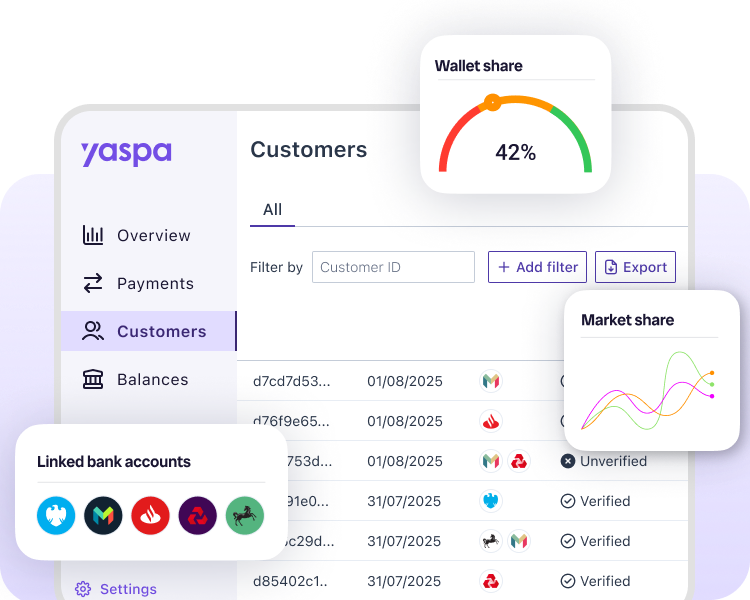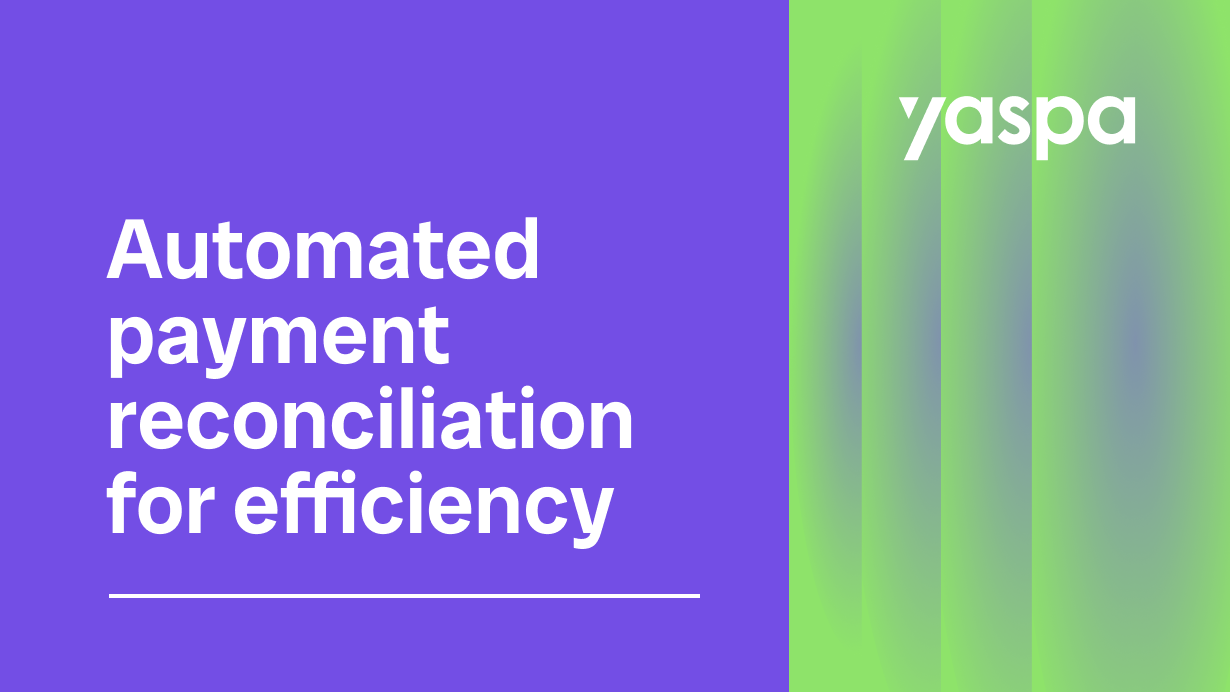Subscribe
Stay in the know
Discover the latest payments news and events from Yaspa and the fintech world in our monthly newsletter.
Refunds are often overlooked by online retailers when choosing a payment supplier. Usually the decision to partner with a supplier comes from customers’ familiarity with a specific payment method, with the operational efficiency of the supplier being in second place.
But refunds are an important part of an eCommerce business’s operations, so this blog post will guide you through how refunds work with different payment suppliers and what to consider when picking a payment supplier.
First and foremost, let’s make a clear distinction that people often find confusing…

Refunds occur when a retailer is making a voluntary, requested payment to a customer. For example, if a customer purchases several clothes from an online store but decides to return a few of them, they would typically contact the store, return the items through the store’s required method, and the store, on receipt of the undamaged goods, would issue a refund back to the customer.
However, it doesn’t always run as smoothly as that. For instance, the customer might believe the goods they have been sent (or the services they have been sold) are not what they expected, and a dispute may arise. Alternatively the retailer may take issue with the state of the returned goods, and disagree that a refund is due; or the customer’s card might have been hacked and used for fraudulent purposes – the customer only being aware of this when they see unfamiliar charges on their statement. In these cases, if the retailer refuses to issue a refund, the customer may go directly to their bank or card provider, who would in turn compensate the customer, and issue a chargeback for the funds from the originating merchant (which it may choose to either challenge or accept).
Not only are chargebacks financially and administratively frustrating, they can potentially be harmful to a business. Besides losing revenue, penalties can be imposed by both the acquirer (retailer’s bank) and the payment processor (e.g. Visa, Mastercard, PayPal etc.) to the retailer, and if a business’s chargeback ratio passes a certain level, then payment processing fees may increase.
So, the main difference between a refund and a chargeback is who issues it and its nature.
The time and process of refunds depend on a number of factors, which include:
It’s advisable, if not obligatory (depending on your processor), for retailers to refund customers using the same payment method that was originally used. This is for good reason – it defends the business from abuse by money launderers.
Fraudsters can pay for goods using stolen funds, and by requesting refunds to an alternative payment method they’re breaking the money flow, making it harder to trace. (This is another reason why an account-to-account payment provider such as Yaspa, who can help to verify that an account belongs to a certain, identifiable, individual, is so useful – particularly in regulated or high risk industries, or when a business is retailing high-value goods.)
So, let’s take a look into how refunds work for the most popular payment methods commonly used for eCommerce.
If a customer has used PayPal to purchase goods and wishes to be refunded, they can submit a request via the Paypal app. Using the app, they have to go to their ‘Activity’, choose the payment they want to refund, click ‘Issue a refund’, and enter the amount they would like to be refunded. If the retailer refuses to process the refund the customer can raise a claim, in which case PayPal is asked to investigate the situation and decide the solution.
PayPal doesn’t charge for refunds and it makes payouts in the same currency that the initial payment was made with. However, when a refund is issued to a customer, PayPal doesn’t refund the transaction fees incurred on the original transaction and paid for by the retailer.
A customer can request a refund up to 180 days after the day of purchase. The customer can ask to receive a refund immediately, providing the “cancel” button is visible next to the payment information.
Card refunds are slow and expensive. The reason why they are so costly and time-consuming is due to the high number of intermediaries in both debit and credit processes.
When a customer requests a credit card refund they won’t receive cash. Instead, they will receive credit in their account. The reason for this is because the purchase was made with credit rather than debit, therefore the retailer received the funds from the credit issuer (the customer’s bank, for example) and not the customer directly.
For debit card refunds, the customer receives the funds because they made a full purchase with their own money. However, depending on a business’s refund policy, the customer may receive a voucher instead of funds.
Card refunds can take up to 10 working days. For a card payment to be processed, the acquiring and issuing banks need to approve it, with the payment supplier working as the intermediary.
The same rules apply to eWallets, like Apple Pay and Google Pay, where debit and credit cards are stored and used for online and offline transactions.
Buy Now, Pay Later (BNPL) refund policy depends on the provider, but they all advise the customer to contact the retailer first. In the cases of the most popular BNPL providers in the UK (such as Klarna and Clearpay),
All BNPL providers warn that until the retailer has accepted the refund request, the customer will continue paying their weekly/monthly payment plan.
BNPL refunds can take up to 2 weeks to complete. It can also take extra 5-7 business days for the funds to be processed by the bank and be visible in the customer’s account.
Yaspa’s instant cardless payments software, is a purpose-built payments solution that can be easily integrated into your existing systems to allow you to offer secure, instant account-to-account payments, providing a great customer experience. Thanks to open banking technology, eCommerce retailers can use Yaspa to make refunds directly to verified consumer bank accounts that settle instantly, protecting themselves from refund abuse while reducing the costs typically incurred by the payment intermediaries inherent in card payments.
The platform comes with different types of integration to suit your businesses, making it quick and easy to set up (we have plug-ins for most shopping carts), and we provide you with a payment method that has been user-optimised and fully end-to-end tested to ensure you have a payment experience worthy of your brand.
What’s more, with Yaspa retailers can easily monitor payments in and out with a user-friendly dashboard, complete with a dedicated corporate account for holding funds, making reconciliation and refunds simple.
Watch the demo to see how our dashboard can work for you.
You can add Yaspa as a payment option at checkout alongside your existing providers. We work with many brands, large and small, across the UK and Europe, and would love you to try it in your business. See it for yourself and try a payment by making a £1 charity donation here, and for a full demo or to talk to us about the options, contact us here.
Find out how VCL Vintners are using Yaspa to process high-value transactions securely while transforming the online whisky investment experience – and their profitability – in this short case study.
This article is a revision of one published in September 2022.

Subscribe
Discover the latest payments news and events from Yaspa and the fintech world in our monthly newsletter.
"*" indicates required fields


